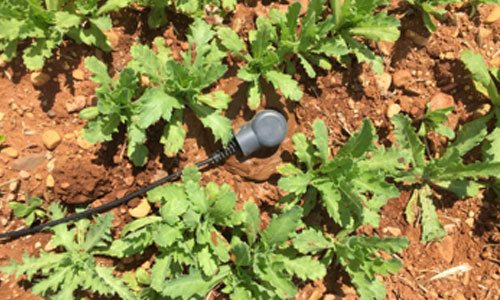Soil Moisture Sensors
The right soil is essential for your crop to develop properly. At AgriSat we put innovation at the service of agriculture, through the use of soil moisture sensors that allow the detection of any type of anomaly thanks to measurement and monitoring.
Soil is a very unpredictable and changeable variable. The implementation of moisture sensors for irrigation is necessary to determine the water needs of each crop and act accordingly.
Why implement a moisture sensor in the soil?
Agrisat is one of the most important Spanish companies in agricultural digitalisation, revolutionising the way of conceiving the development and activity of a sector as rudimentary as agriculture through solutions such as soil moisture sensors.
Thanks to this type of soil moisture sensor, you will not have to worry about irrigation efficiency, controlling at all times the amount of water supplied and needed by each crop.
If you add it to the Irrimaps® service that Agrisat also has, with a parametric adjustment and parcel segmentation of the different water needs of your plantation, you will be able to determine whether the water supply is in line with the optimum limits previously established by the service.
In addition, with the moisture sensor for irrigation you can also establish a temperature relationship (thanks to a built-in sensor), being able to determine whether it is optimal or not based on the weather conditions you are facing at any given time.
This way you will be able to gather enough information to make quick decisions and be able to establish an effective, efficient and quality irrigation system that guarantees a good production.
How do moisture sensors for irrigation work?
The types of soil moisture sensors that exist are varied, and there is a classification that divides them into two groups according to the interpretation of the moisture.
Regardless of the type chosen, the operation of the soil moisture sensor is very simple. The installation must therefore be rigorous, ensuring that its metal part is anchored to the ground at all times in order to be able to collect the measurement data correctly.
The depth at which it is installed will vary according to the condition and characteristics of the soil, looking for the point where the weather does not affect the measurement. Although they have a layer capable of resisting any type of damage.
It is for all these reasons that thanks to the implementation of sensors that measure the relative humidity of the soil, we can guarantee the effective growth of the crop.






